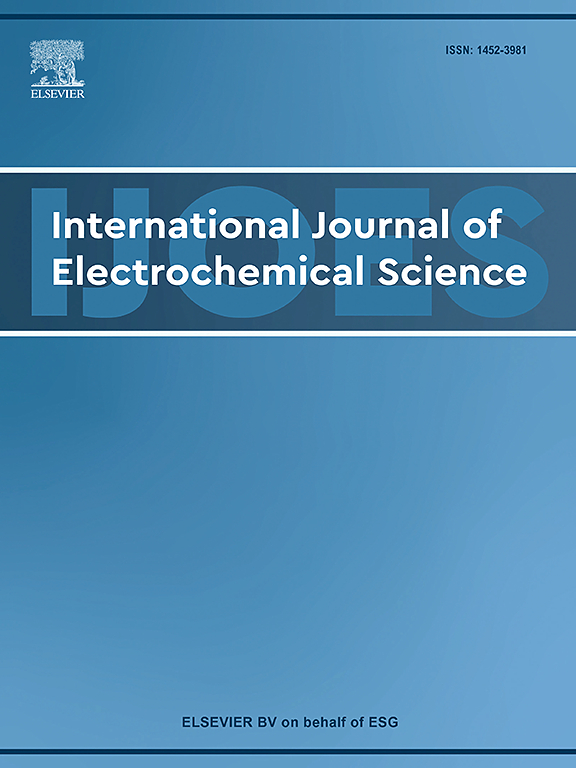20#钢环氧基保护涂层在冷却水中的失效机理及腐蚀行为
IF 2.4
4区 化学
Q4 ELECTROCHEMISTRY
International Journal of Electrochemical Science
Pub Date : 2025-10-13
DOI:10.1016/j.ijoes.2025.101207
引用次数: 0
摘要
保护性有机涂层对于延长工业循环水热交换器的使用寿命和确保其安全、低碳运行至关重要。然而,长期暴露在高温循环水中会加速涂层降解和基材腐蚀,而潜在的电机制仍未得到充分了解。在这里,我们通过将涂有环氧树脂的20#碳钢浸泡在40°C的冷却水中40天来阐明这些机制,重点研究阳极面积比为1:2(小阳极与大阳极)的局部涂层损伤。浸泡过程中,小阳极和大阳极试样的涂层厚度分别下降到96.04 µm和93.12 µm,而水泡密度在20-5.1 n cm−2和5.3 n cm−2之间急剧增加。腐蚀速率分别为1.143 mm a−1(小阳极)和1.048 mm a−1(大阳极)。小阳极表现出明显更强的“小阳极效应”,产生更高的电流密度、更深的凹坑和更严重的局部攻击。在腐蚀过程中,铁基产物如Fe2O3、β-FeOOH和Fe(OH)3最初加速阳极溶解,随后压实形成临时屏障,最终发生分层。通过揭示局部涂层失效和电偶耦合如何协同加剧腐蚀,阐明腐蚀产物的瞬态保护作用,本研究推进了对电偶腐蚀动力学的基本理解,并为设计下一代涂层和预测性维护策略提供了机制框架,从而推动了腐蚀科学和工程的进步。本文章由计算机程序翻译,如有差异,请以英文原文为准。
Failure mechanisms and corrosion behavior of epoxy-based protective coatings prepared on 20# steel exposed to cooling water
Protective organic coatings are essential for extending the service life and ensuring the safe, low-carbon operation of industrial circulating-cooling-water heat exchangers. Yet prolonged exposure to high-temperature recirculating water accelerates coating degradation and substrate corrosion, while the underlying galvanic mechanisms remain insufficiently understood. Here, we elucidate these mechanisms by immersing epoxy-coated 20# carbon steel in 40 °C cooling water for 40 days, focusing on localized coating damage with an anode-area ratio of 1:2 (small vs. large anode). During immersion, the coating thickness declined to 96.04 µm and 93.12 µm for the small-anode and large-anode specimens, respectively, while blister density surged by day 20–5.1 n cm−2 and 5.3 n cm−2. Substrate corrosion rates reached 1.143 mm a−1 (small anode) and 1.048 mm a−1 (large anode). The small anode exhibited a markedly stronger “small-anode effect,” generating higher galvanic current density, deeper pits, and more severe localized attack. Corrosion followed a dynamic “film formation-breakdown-reformation” cycle in which iron-based products such as Fe2O3, β-FeOOH, and Fe(OH)3 initially accelerated anodic dissolution, subsequently compacted to form a temporary barrier, and ultimately underwent delamination. By revealing how localized coating failure and galvanic coupling synergistically intensify corrosion and by clarifying the transient protective role of corrosion products, this study advances the fundamental understanding of galvanic corrosion kinetics and provides a mechanistic framework for designing next-generation coatings and predictive-maintenance strategies, thereby driving progress in corrosion science and engineering.
求助全文
通过发布文献求助,成功后即可免费获取论文全文。
去求助
来源期刊
CiteScore
3.00
自引率
20.00%
发文量
714
审稿时长
2.6 months
期刊介绍:
International Journal of Electrochemical Science is a peer-reviewed, open access journal that publishes original research articles, short communications as well as review articles in all areas of electrochemistry: Scope - Theoretical and Computational Electrochemistry - Processes on Electrodes - Electroanalytical Chemistry and Sensor Science - Corrosion - Electrochemical Energy Conversion and Storage - Electrochemical Engineering - Coatings - Electrochemical Synthesis - Bioelectrochemistry - Molecular Electrochemistry

 求助内容:
求助内容: 应助结果提醒方式:
应助结果提醒方式:


